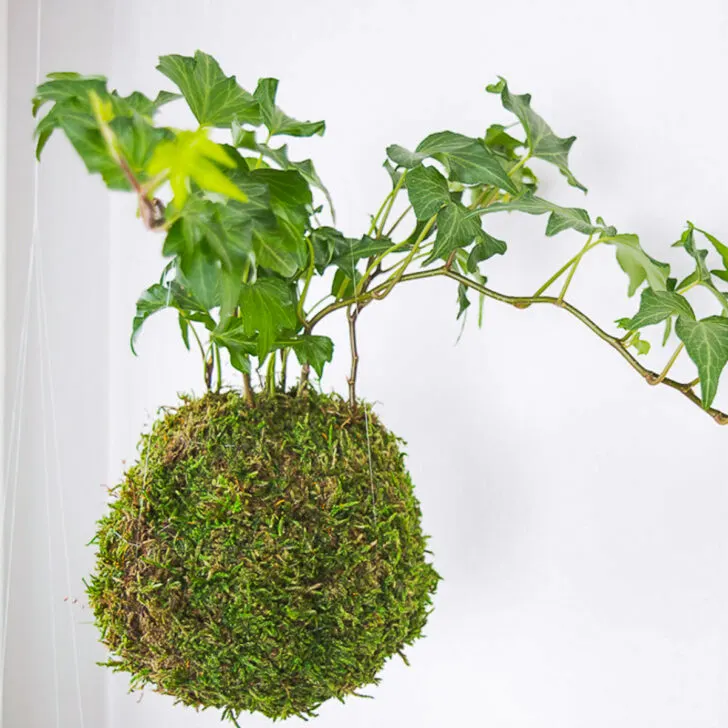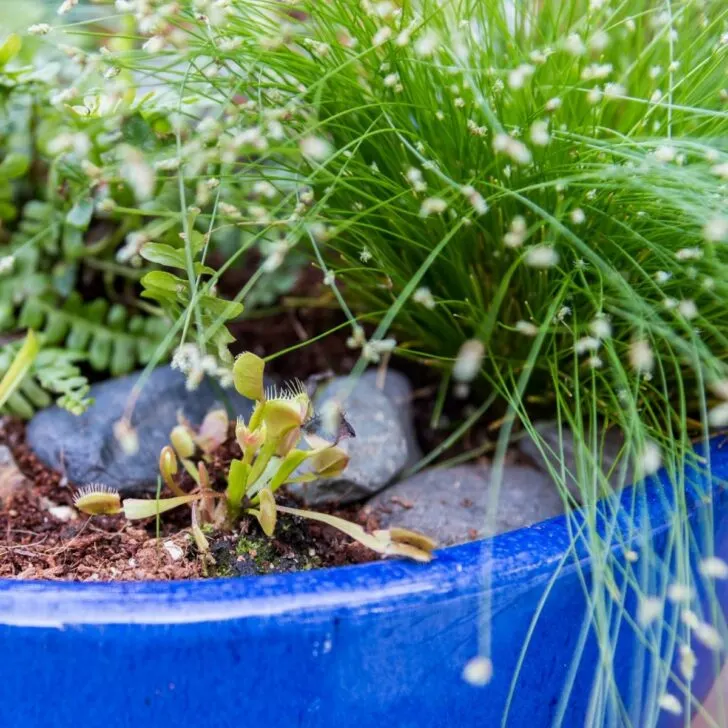Why use grow bags instead of pots? Find out the pros and cons of grow bags for gardening, and why they can be better for your plants!
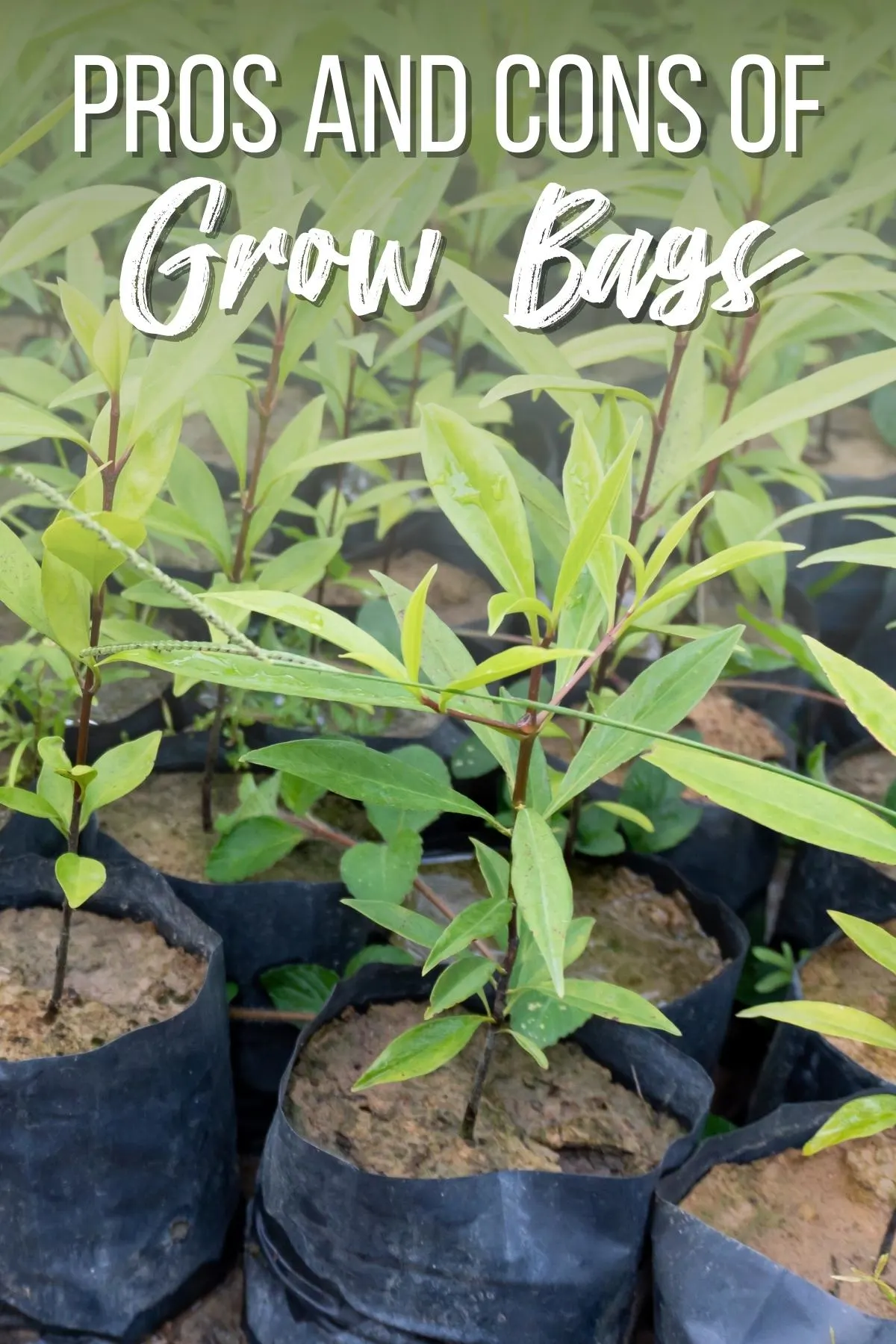
Did you know you can grow a vegetable garden in a bag? Growing cucumbers in grow bags may seem odd, but it provides several advantages. I'm going to share these secrets with you today!
In this article, we take an in-depth look at the pros and cons of grow bags for gardening. What are they, and how are they different from other containers? Why choose to use grow bags instead of planting directly in the ground?
Once you've decided to start your next garden project in a fabric bag, be sure to check out this article on how to use grow bags for the best results!
Let's get started!
This post contains affiliate links for your convenience. Purchases made through these links may earn me a small commission at no additional cost to you.
Advantages of Grow Bags
Let's start with this simple question: why would I grow plants in a bag instead of a plastic or terracotta pot? At first glance, it may seem a bit counterintuitive, but it's actually better for the health of the plant!
Air Pruning the Roots
The largest appeal for using grow bags is their ability to prevent roots from binding. If you've ever removed a plant from a pot and found huge swirls of roots at the bottom, you'll know what I mean!
Plants become root bound when it outgrows the pot. The roots are looking for a place to go, and they start to grow in circles around the inside of the pot. This thick tangle of roots doesn't allow the plant to absorb nutrients from the soil effectively, so it doesn't grow as well as it should.

So, to prevent your roots from becoming bound, it would make sense to prune your roots. While there are some techniques to prune roots, you run the risk of cutting the wrong one and stunting your plant's growth (or even killing it!)
Grow bags allow air to penetrate the exterior layer of soil. As the roots grow toward the edge, they will contact the air and stop growing in that direction (this is why you normally don't see roots at the top of the soil). This "air pruning" signals to the plant that it should grow more roots that branch from the center.
So, not only do grow bags prevent roots from becoming bound, but they also encourage new root growth, resulting in a healthier plant and a more bountiful harvest!
Cost
Grow bags are typically cheaper than pots. You can get a pack of 5 five-gallon grow bags for under $20. I recently bought an assortment of different sizes for the outdoor plant stand on our deck, and it cost a fraction of the price of individual plastic pots!
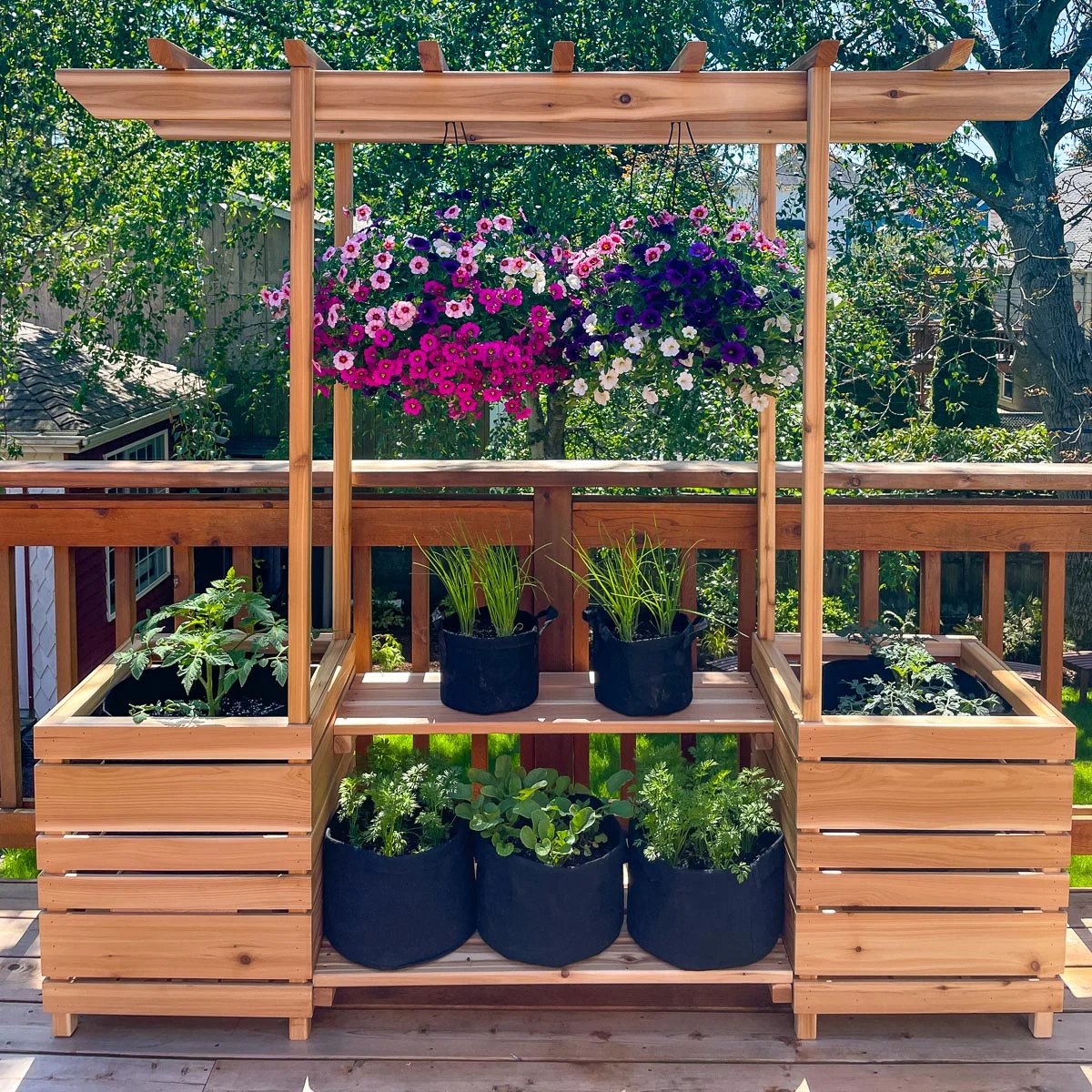
Depending on where you shop, you could probably find even cheaper options. Some people have even had success with fabric Walmart bags! Anything that allows for proper drainage and soil-to-air contact along the sides will work.
Temperature Regulation
Hard pots tend to hold in the heat, especially when they're a dark color or made of stone or concrete. If you live in a particularly hot climate, you could roast your plant!
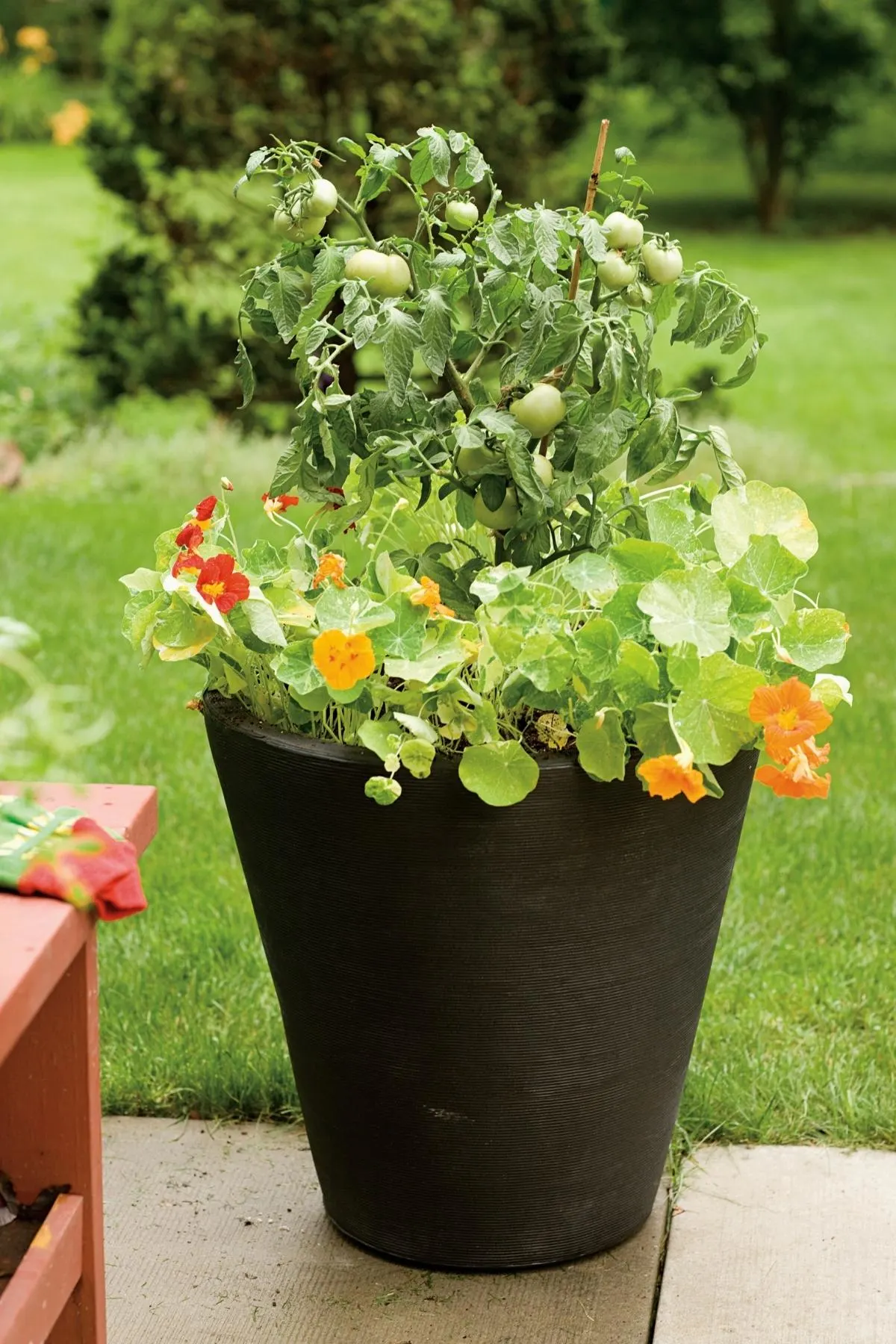
Grow bags allow the plants to breathe. Think of grow bags as having the ability to sweat, allowing for superior thermal regulation.
Drainage
You don't need to worry about drowning your plants when using grow bags. The porous nature of the fabric allows water to drain out, so you don't get root rot.
If you're growing plants that need more moisture, you can amend the potting soil with vermiculite or water storing crystals to help keep those plants happy.
You can also place a tray under grow bags to capture the excess water that drains through, allowing the plant to draw it up when needed.
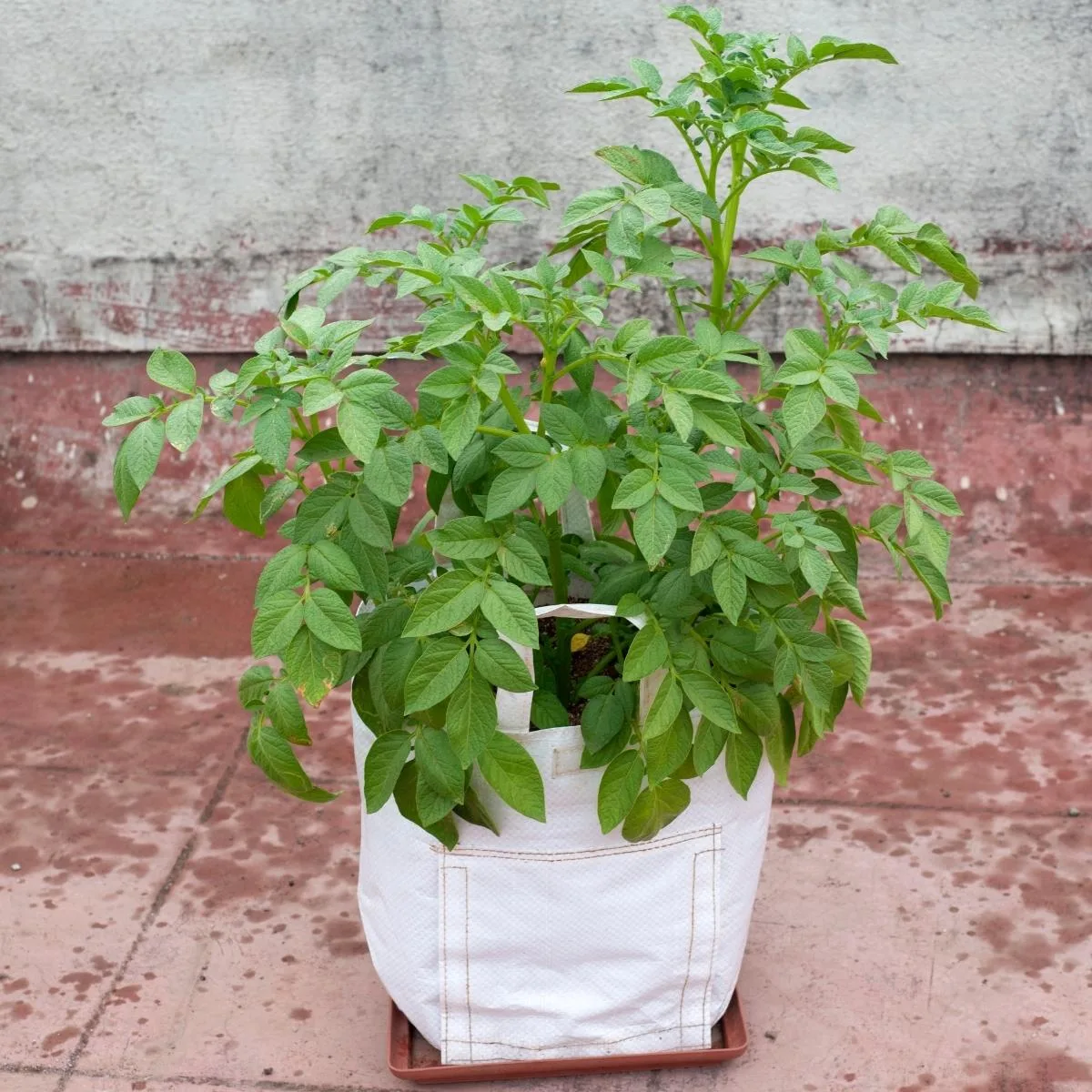
Storage and Mobility
Many folks living in apartments feel left out of the gardening club. Not anymore! With grow bags, you can have a substantial amount of plants on your balcony or patio. What do you do with all those bags in the winter? Simply fold them up and store them away!
This also makes it easy to pot up plants as they grow. Instead of storing a huge variety of containers and trays, you can buy an assortment of seedling grow bags that take up very little space.
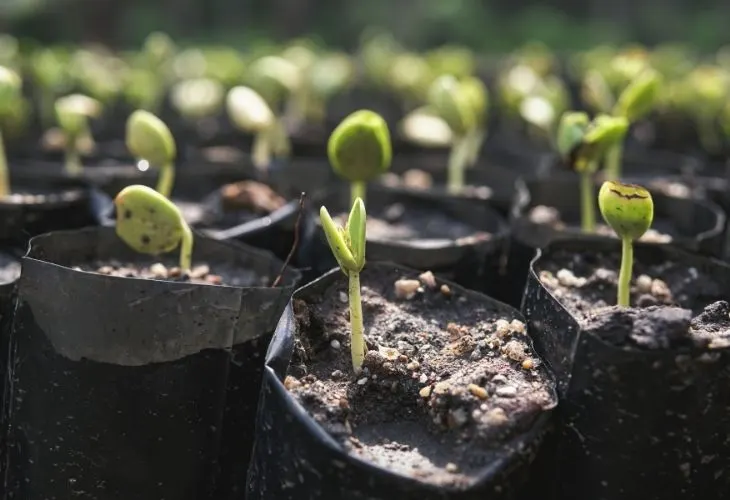
For those who have plenty of space, grow bags are simple to move around, as they usually have handles attached. As the sun patterns change throughout the season, you can move your plants to sunnier or shadier spots as needed without worrying about dropping a heavy pot.
Soil Customization
Not all plants need the same kind of soil. With grow bags, you don't need to trade off one plant's nutritional needs for the others.
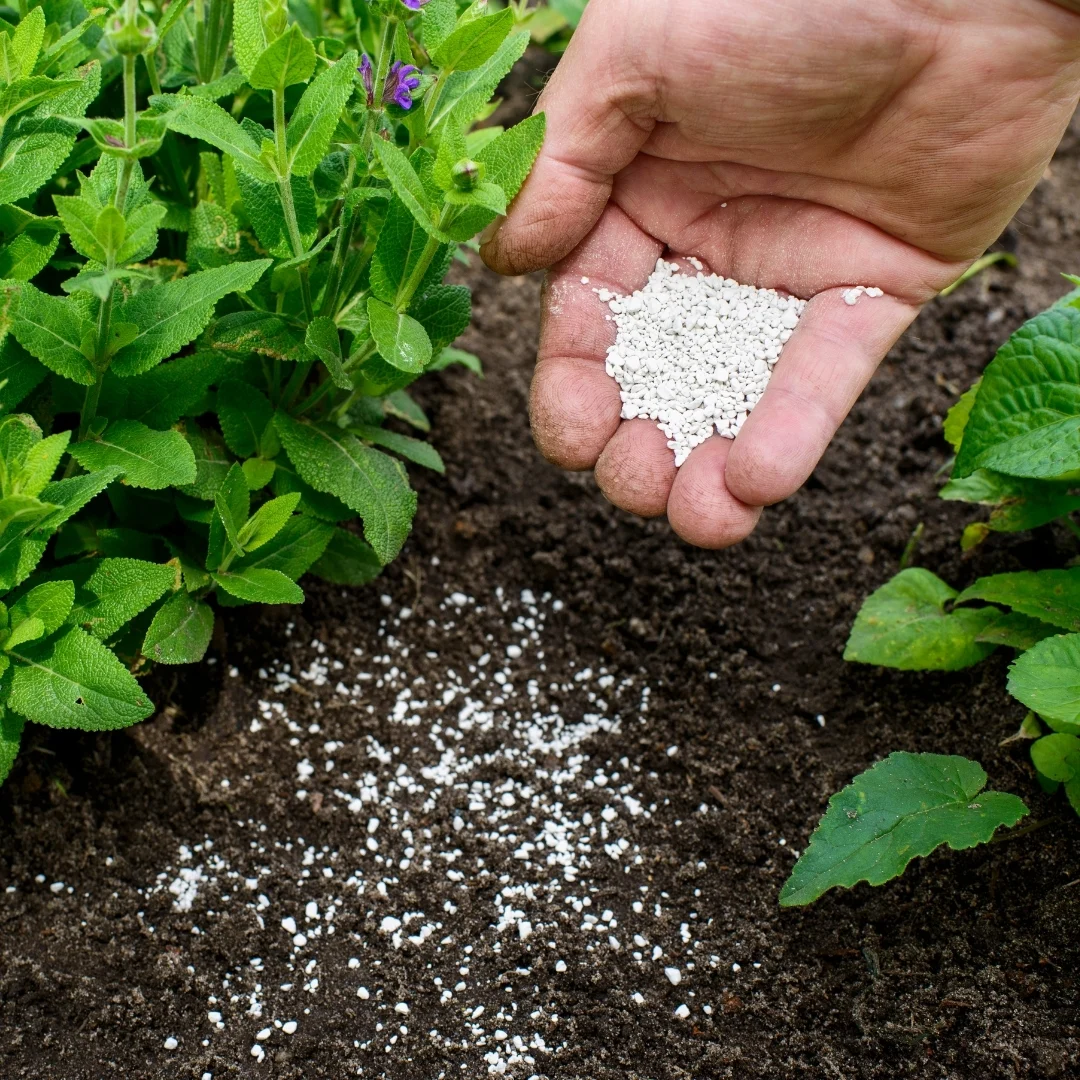
Some will thrive in more acidic soil, or need more nitrogen, phosphorous or potassium than normal. You can also experiment with different types of fertilizer on the same kind of plant in different bags to see what works best!
Flexibility
The portability of a grow bag allows you to plant a garden in places that would otherwise be off-limits.
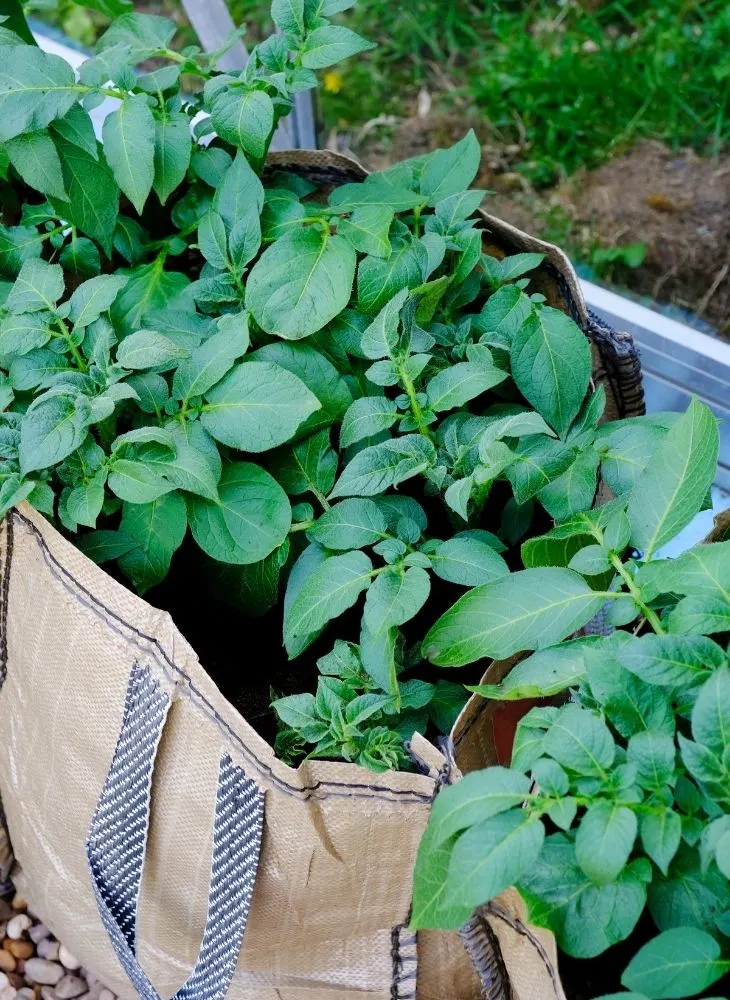
I've even grown tomatoes in grow bags! Build this simple DIY tomato cage that fits perfectly around a 10 gallon grow bag to support the plant as it gets bigger.
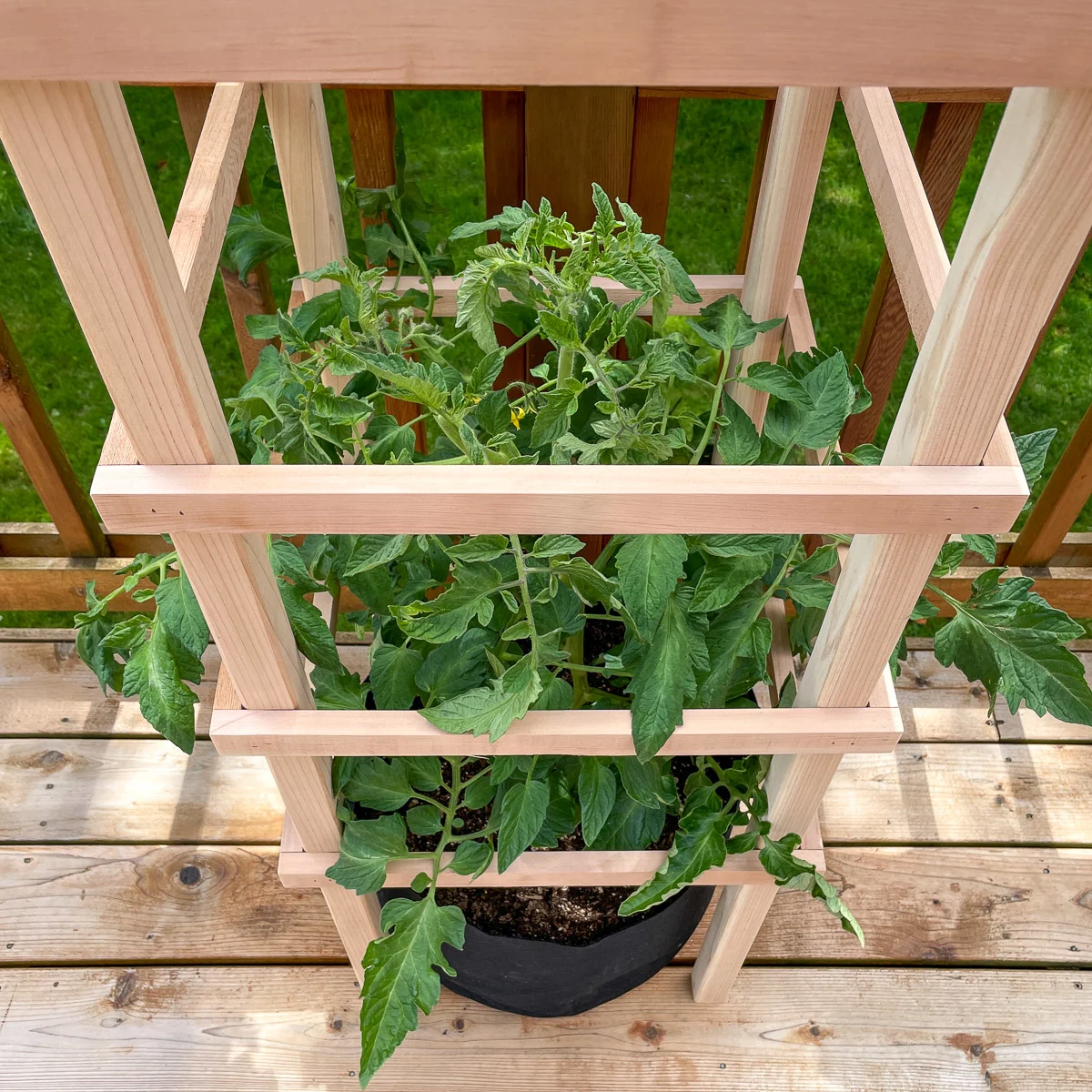
If you're renting a house, your landlord may be more friendly to setting up a large grow bag rather than digging into the yard or building a raised bed. When you move, you can take your garden with you!
Disadvantages of Grow Bags
Alright, we've discussed the positives, now let's explore the negatives. While grow bags are a great asset, they aren't perfect.
Not Attractive
By themselves, grow bags aren't as easy on the eyes when compared with a beautiful garden pot. While they now come in a variety of colors, I prefer the black ones because they don't show dirt and water stains through the fabric.
Building a wooden frame around your grow bags can help keep your yard looking beautiful while still enjoying the benefits of these containers. For example, this planter box with a trellis would be the perfect fit for a five gallon grow bag!
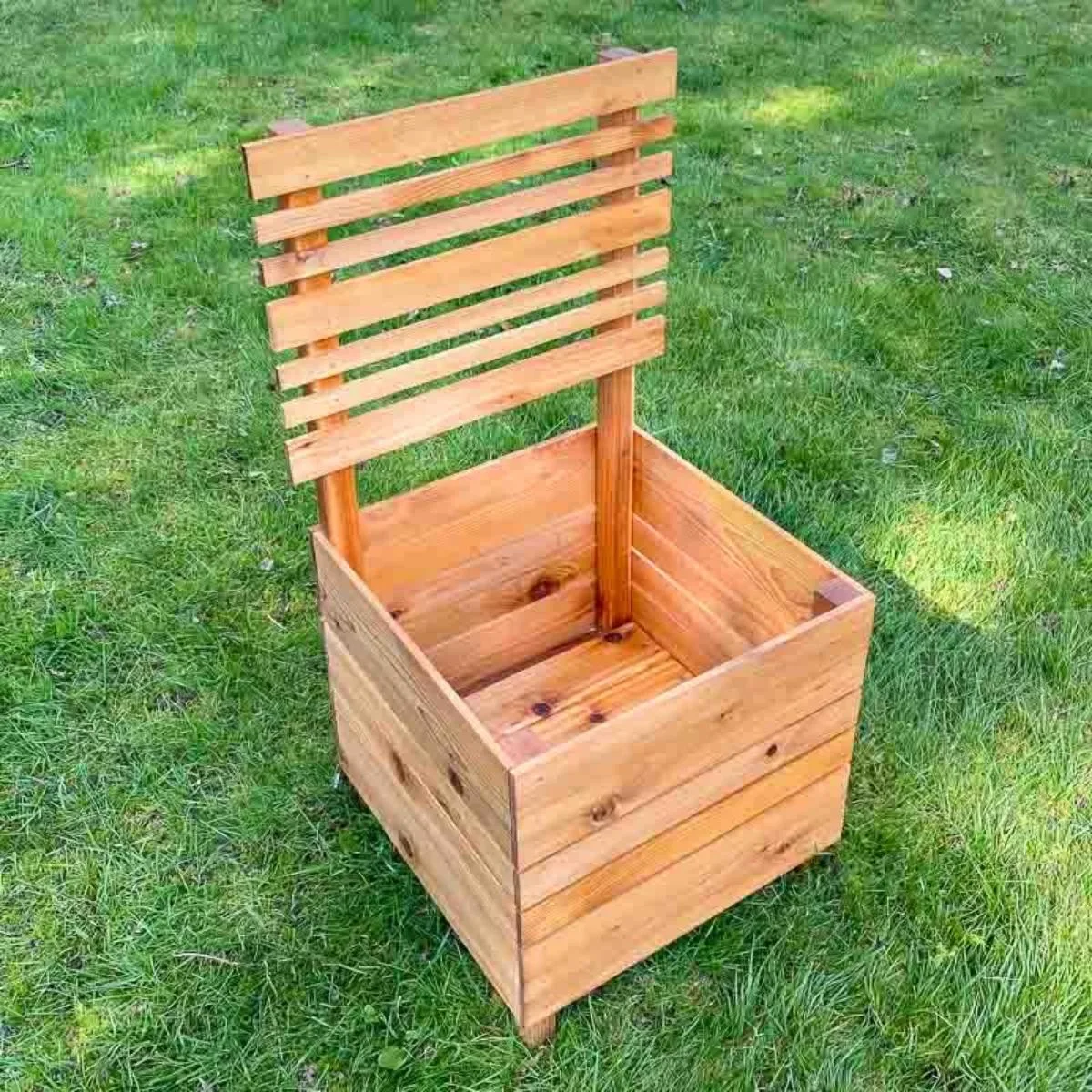
You could even build a raised bed frame, but fill it with individual grow bags instead! This would make it much easier to replace plants as growing seasons change, while also hiding the unattractive fabric.
Needs More Water
While the grow bag's ability to drain water is a plus, it can also create some extra work. Since water easily drains through the fabric, some plants will require more frequent watering.
Thankfully, there's an easy fix! Set up a drip irrigation system to water all your plants on their own schedule!
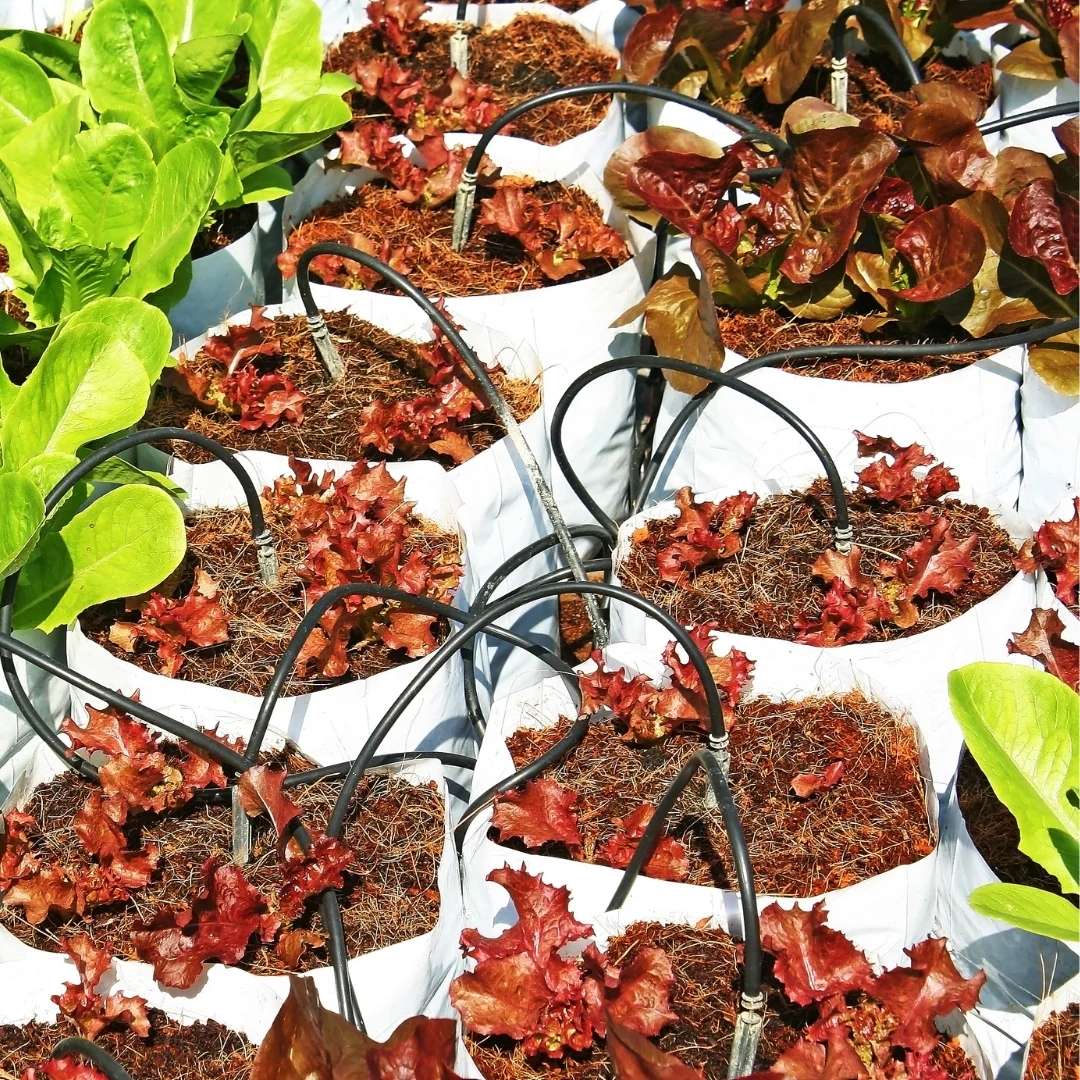
Drip irrigation is easy to set up with your existing outdoor faucet and flexible rubber tubing. Individual emitters in each bag allow you to customize the amount of water each plant receives. Then add a timer system so you can set it and forget it! Check out this article for more drip irrigation pros and cons to see if it's right for you.
You can also create a water reservoir to place under your grow bags. Some people even use a kid's swim pool! As long as you keep the pool filled with a few inches of water, the plants will draw up the moisture through the bottom as needed.
Less Durable
Grow bags can be less durable than other options. Over time, the fabric can degrade, rendering them ineffective. Also, if you have an especially large and heavy bag, there's a possibility it could rip when you try to drag or move it. All these problems could end up costing you more money in the long run.
Here are some things you can do to make your grow bags last.
First, buy quality - if you plan on using them for a while, it's worth the extra cash. While a reusable cloth bag from the grocery store may work in a pinch, it's not going to survive as long as a grow bag that was specifically made for this purpose.
Second, empty them for the season. Having soil in your grow bag year-round will cause your grow bags to wear faster. Dump the used soil in the compost bin and have it ready for the next round in the spring!
If you’ve never tried grow bags before, give it a shot. You might be surprised at how easy they are to use – and how much your plants love them!
Check out these other container garden articles!

